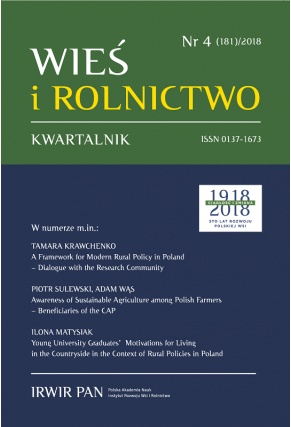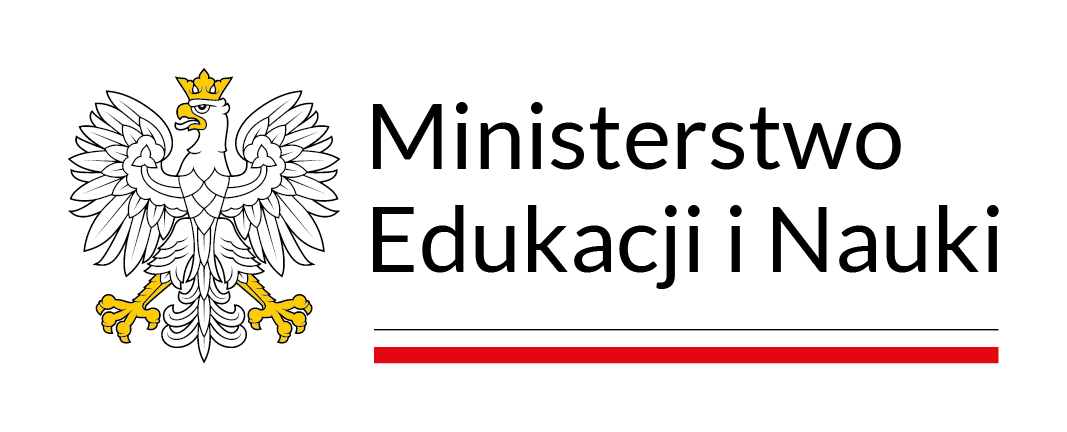Some General Considerations on Coordination Mechanisms and their Potential Role in Rural Policy
DOI:
https://doi.org/10.53098/wir042018/07Keywords:
coordination mechanisms, governmental policy, political transaction costs, rural policyAbstract
The objective of this paper is to discuss, from the theoretical point of view (transaction costs economics and system approach), the limitations of the governmental policy and rural policy in particular – which aims to intervene into coordination of transactions between economic agents. The conceptual framework of the paper is based on the distinction between three ideal types of coordination’s mechanisms (namely: competition, hierarchical control, values/norms and vertical liaisons) and real institutional arrangements, which could base only on one of ideal type or be a mixture of them. Rural policy is dedicated to solving the problem, which could not be solved solely by a market. However, governmental intervention suffer from failures of its own. This is a true particularly in the case of uniformly applied, extended top-down policy based mainly on hierarchical control. In such a case, market failures could be mitigated (and therefore market transaction costs), but, on the other hand, the political transaction cost (variable and fixed as well as) could be tremendous. The main conclusion of the paper is that one could expect that the minimum of both categories of transaction costs (market and political) will be probably achieved in the case of rural policy, which is composite of different coordination’s mechanism, not solely hierarchical control. This conclusion is in line with the shift to the new paradigm (Rural Policy 3.0) recommended by OECD, which generally is based on stronger decentralization, improved multi-level governance and involvement of non-government as well as private organizations.
References
Arrow K.J. (1969). The organization of economic activity: Issues pertinent to the choice of market versus non-market allocations. In: Analysis and Evaluation of Public Expenditures: The PPP System, Vol. 1 (pp. 47–64). U.S. Joint Economic Committee, 91st Congress, 1st Session, Washington D.C.: U.S. Government Printing Office, republished on http://down.cenet.org.cn/upfile/34/20041225171325114.pdf.
Arrow K.J. (1974). Limits of Organization. New York: W. W. Norton & Company.
Ashby W.R. (1956). An Introduction to Cybernetics. London: Chapman & Hall. DOI: https://doi.org/10.5962/bhl.title.5851
Ashby W.R. (1958). Requisite variety and its implications for the control of complex systems. Cybernetica, 1(2), 83–99, republished on http://pespmc1.vub.ac.be/books/AshbyReqVar.pdf
Axelrod R. (2006). The Evolution of Cooperation. New York: Basic Books. DOI: https://doi.org/10.1073/pnas.0606053103
Blaug M. (1996). Economic Theory in Retrospect. Cambridge: Cambridge University Press. DOI: https://doi.org/10.1017/CBO9780511805639
Chandler A.D. (1990). Strategy and Structure: Chapters in the History of the American Industrial Enterprise. Cambridge: The MIT Press.
Coase R.H. (1937). The nature of the firm. Economica, 4 (16), 386–405. DOI: https://doi.org/10.1111/j.1468-0335.1937.tb00002.x
Coase R.H. (1960). The problem of social cost. The Journal of Law & Economics, 3, 1–44. DOI: https://doi.org/10.1086/466560
Commons J.R. (1931). Institutional Economics. The American Economic Review, 21 (4), 648–657.
Cooper D.J. (1997). Barometric price leadership. International Journal of Industrial Organization, 15 (3), 301–325. DOI: https://doi.org/10.1016/0167-7187(95)01005-X
CPB Netherlands Bureau for Economic Policy Analysis (1997). Challenging Neighbours: Rethinking German and Dutch Economic Institution. CPB Netherlands Bureau for Economic Policy Analysis, Den Haag. Berlin: Springer.
Czyżewski A., Kułyk P. (2013). Kwestia rolna w teorii wyboru publicznego. Roczniki Naukowe Ekonomii Rolnictwa i Rozwoju Obszarów Wiejskich, 100 (3), 7–18. DOI: https://doi.org/10.22630/RNR.2013.100.3.32
Dunbar R. (2014). Human Evolution. London: Penguin Books.
Fama E.F, Jensen M.C. (1983a). Separation of ownership and control. The Journal of Law and Economics, 26 (2), 301–325. DOI: https://doi.org/10.1086/467037
Fama E.F, Jensen M.C. (1983b), Agency problem and residual claims. The Journal of Law and Economics, 26 (2), 327–349. DOI: https://doi.org/10.1086/467038
Fehr E., Fischbacher U. (2003). The nature of human altruism. Nature, 425 (23), 785–791. DOI: https://doi.org/10.1038/nature02043
Furubotn E.G., Richter R. (2011). Institutions and Economic Theory: The Contribution of the New Institutional Economics. Ann Arbor: The University of Michigan Press.
Government of Poland (2017). Strategy for Responsible Development. Warsaw: Ministry of Infrastructure and Development.
Gruszecki T. (2002). Współczesne teorie przedsiębiorstwa. Warsaw: Wydawnictwo Naukowe PWN.
Handy C. (1995). The Empty Raincoat: Making Sense of the Future. London: Random House Business Books.
Hayek F.A. (1945). The use of knowledge in society. The American Economic Review, 35 (4), 519–530.
Hennart J.-F. (2008). Transaction costs perspectives on inter-organizational relations. In: S. Cropper, Ch. Huxham, M. Ebers, P.S. Ring (eds.), The Oxford Handbook of Inter-Organizational Relations (pp. 339–365). Oxford: Oxford University Press. DOI: https://doi.org/10.1093/oxfordhb/9780199282944.003.0013
Jensen M.C. (1998). Introduction. In: M.C. Jensen (ed.), Foundations of Organizational Strategy (pp. 1–7). Cambridge: Harvard University Press.
Kornai J. (1971). Anti-Equilibrium. On Economic Systems Theory and the Tasks of Research. Amsterdam: North-Holland.
Maasdorp C.H. (2004). Structure, Wellspring or Content: A conceptual analysis of the notion of Tacit Knowledge in Knowledge Management Theory. MA Thesis. Stellenbosch University, Faculty of Arts and Social Sciences, Department of Information Science. Stellenbosch: Stellenbosch University. http://scholar.sun.ac.za/handle/10019.1/50109.
Majewski E., Malak-Rawlikowska A. (2018). Scenariusze Wspólnej Polityki Rolnej. Zagadnienia Ekonomiki Rolnej, 1, 9–38. DOI: https://doi.org/10.30858/zer/89613
Menard C. (2017). Organization and governance in the agrifood sector: How can we capture their variety? Agribusiness, 34, 142–160. DOI: https://doi.org/10.1002/agr.21539
Milgrom P., Roberts J. (1992). Economics, Organization and Management. Englewood Cliffs (N.J.): Prentice-Hall.
Niedzielski E. (2015). Funkcje obszarów wiejskich i ich rozwój. Zagadnienia Ekonomiki Rolnej, 2, 84–93. DOI: https://doi.org/10.5604/00441600.1152187
Nowak M.A. (2006). Five rules for the evolution of cooperation. Science, 314, 1560–1563. DOI: https://doi.org/10.1126/science.1133755
OECD (Organisation for Economic Co-operation and Development) (2018). OECD Rural Policy Reviews: Poland 2018. Paris: OECD Publishing.
Ouchi W.G. (1979). A conceptual framework for the design of organizational control mechanism. Management Science, 25 (9), 833–848. DOI: https://doi.org/10.1287/mnsc.25.9.833
Ouchi W.G. (1980). Markets, bureaucracies, and clans. Administrative Science Quarterly, 25, 129–141. DOI: https://doi.org/10.2307/2392231
Ouchi W.G., Price R.L. (1978). Hierarchies and Clans: A New Perspective on Organizational Development. Graduate School of Business, Stanford University, Research Paper, 466. Stanford University: Redwood City.
Powell W.W. (1990). Neither market nor hierarchy: Network forms of organization. Research in Organizational Behavior, 12, 295–336.
Quadragesimo Anno (1931). Encyclical of Pope Pius XI. Rome: 15th May 1931 http://w2.vatican.va/content/pius-xi/en/encyclicals/documents/hf_p-xi_enc_19310515_quadra-gesimo-anno.html.
Sexton R.J. (1990). Imperfect competition in agricultural markets and the role of cooperatives: A spatial analysis. American Journal of Agricultural Economics, 72 (3), 709–720. DOI: https://doi.org/10.2307/1243041
Stiglitz J.E. (1987). Some theoretical aspects of agricultural policy. Research Observer, 2 (1), 43–60. DOI: https://doi.org/10.1093/wbro/2.1.43
Stiglitz J.E. (2000). Economics of the Public Sector. 3rd Edition. New York: W. W. Norton & Company.
Tönnies F. (1999). Community and Society. London: Routledge.
Wieliczko B. (2013). Wspólna polityka rolna w latach 2014–2020: Oodpowiedź na niesprawność rynku czy wyraz niesprawności państwa. Roczniki Naukowe Ekonomii Rolnictwa i Rozwoju Obszarów Wiejskich, 100 (3), 19–28. DOI: https://doi.org/10.22630/RNR.2013.100.3.33
Wilkin J. (2009). Ekonomia polityczna reform Wspólnej Polityki Rolnej. Gospodarka Narodowa, 1–2, 1–25. DOI: https://doi.org/10.33119/GN/101222
Wilkin J. (2012). Pogoń za rentą za pomocą mechanizmów politycznych. In: J. Wilkin (ed.), Teoria wyboru publicznego: Główne nurty i zastosowania (pp. 221–237.) Warsaw: Scholar Publishing.
Williamson O.E. (1970). Corporate Control and Business Behavior: An Inquiry into the Effects of Organization Form on Enterprise Behavior. Prentice-Hall International Series in Management. Englewood Cliffs (N.J.): Prentice-Hall.
Williamson O.E. (1983). Markets and Hierarchies: Analysis and Antitrust Implications. New York: The Free Press.
Williamson O.E. (1985). The Economic Institutions of Capitalism. New York: The Free Press.
Williamson O.E. (1991). Comparative economic organization: The analysis of discrete structural alternatives. Administrative Science Quarterly, 36(2), 269–296. DOI: https://doi.org/10.2307/2393356
Williamson O.E. (2000). The new institutional economics: Taking stock, looking ahead. Journal of Economic Literature, 38, 595–613. DOI: https://doi.org/10.1257/jel.38.3.595
Zawojska A. (2011). Pogoń za rentą i lobbing we Wspólnej Polityce Rolnej Unii Europejskiej. Roczniki Nauk Rolniczych, Seria G, 98 (3), 63–72. DOI: https://doi.org/10.22630/RNR.2011.98.3.29











